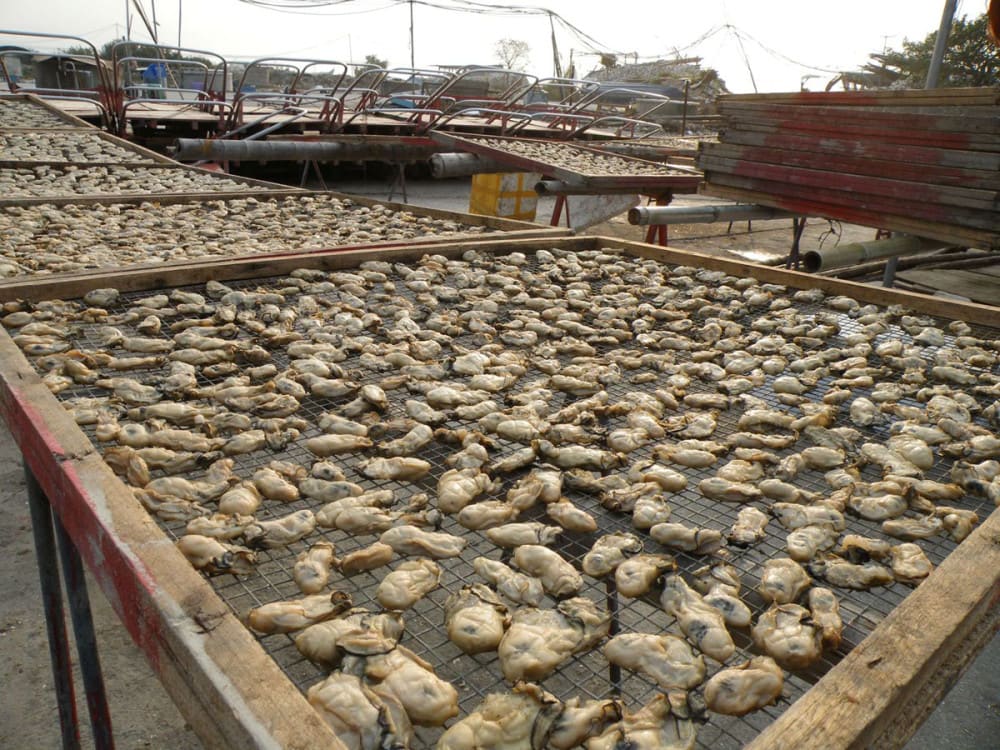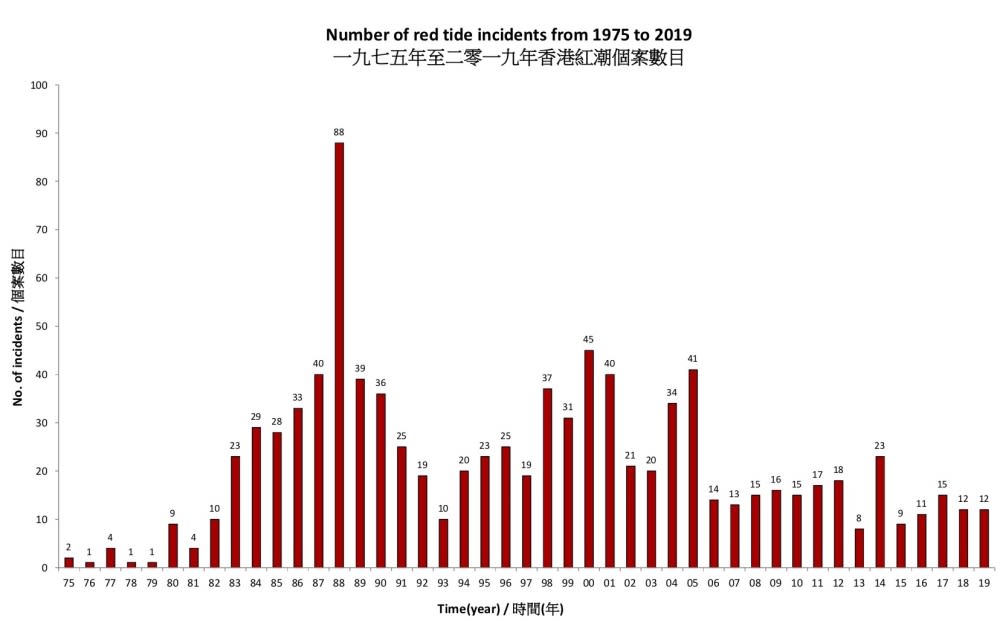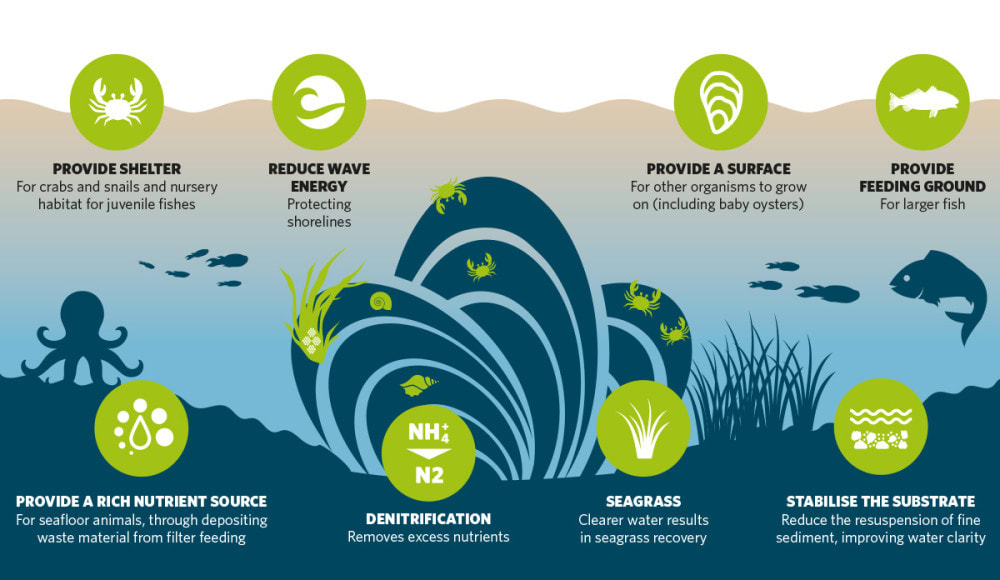Oysters are incredible. Even within their many varieties, their size and flavour are deeply dependent on the waters in which they grow; they can be large or small, sweet, creamy, metallic or briny, with a crisp or juicy texture.
We eat them fresh and raw, dried and golden, grilled with bacon and Worcestershire sauce or in a cheese sauce. Low in calories, oysters provide plenty of protein, vitamin B12, zinc, iron and omega-3 fatty acids.
Hong Kong oysters in the past
Tolo Harbour was once laden with wild pearl-bearing oysters, until the middle of the 17th century. Previously undiscovered oyster fossils were unearthed in 2006 when the Hong Kong and China Gas Company (Towngas) buried a pipeline beneath the seabed along the channel.

It shouldn't be too surprising that Hong Kong was once an oyster haven. The founder of Lee Kum Kee – our very own Hong Kong–based food brand – did (accidentally) invent oyster sauce, after all.
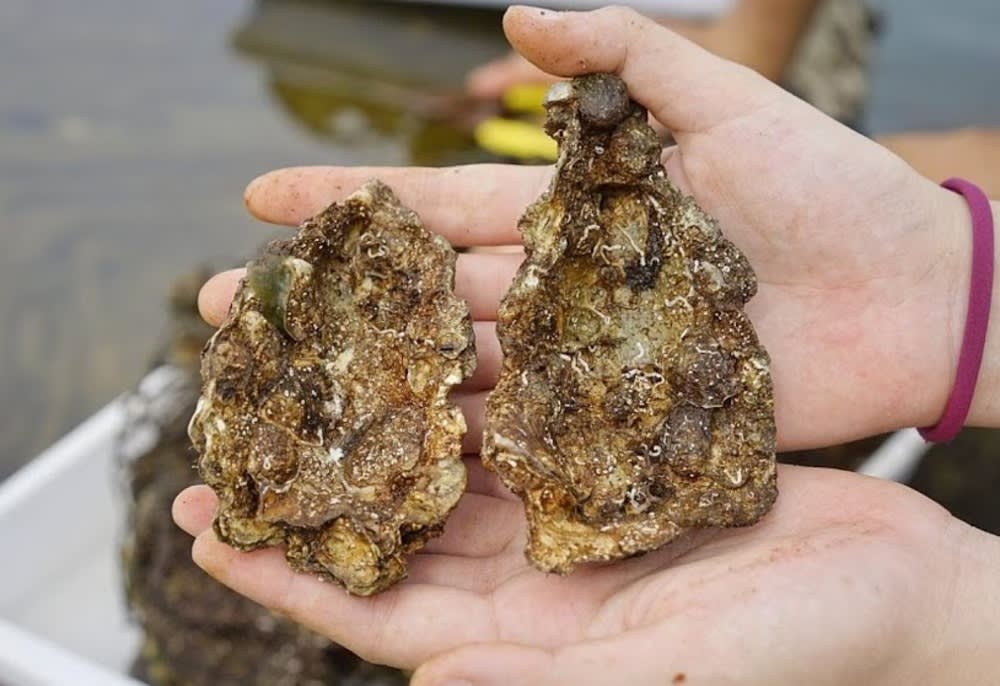
Hong Kong even has its own native oyster species. Crassostrea hongkongensis (also called Magallana hongkongensis) has been cultivated in Deep Bay between Lau Fau Shan and Shenzhen for over 700 years and is interesting for its ability to adapt to large variations in salinity. It is a “true” oyster, not a pearl oyster.
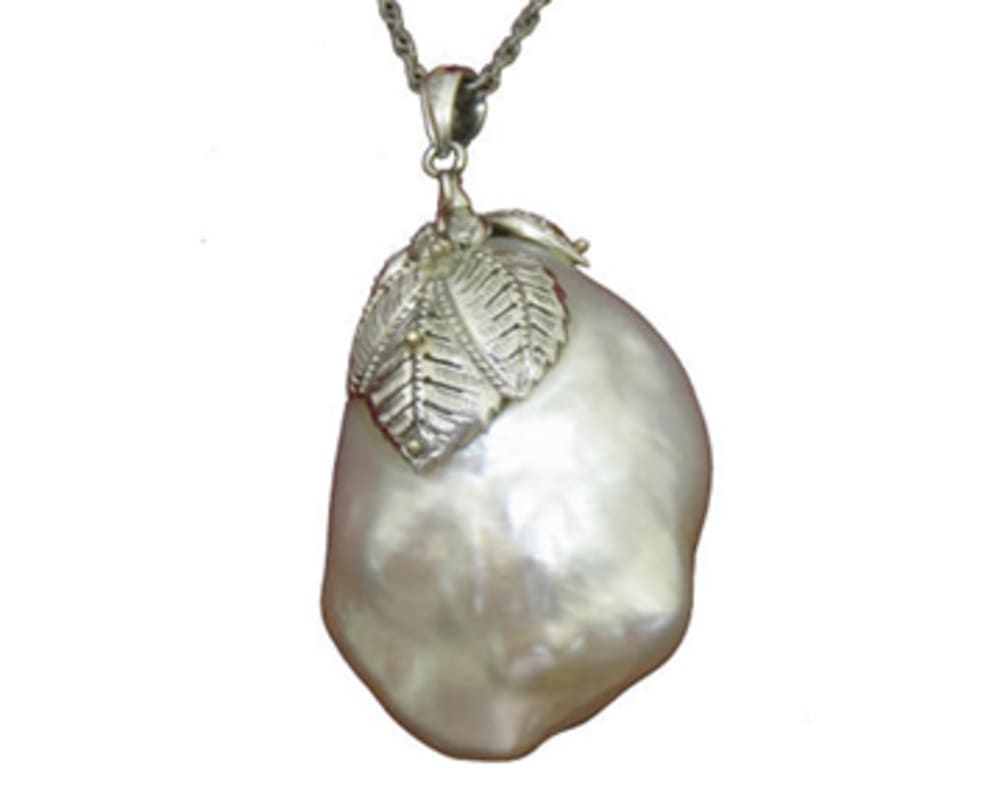
Just to show off, this enormous 127.50-carat baroque-shaped Imperial Hong Kong Pearl is believed to be originally from the South China Sea and is thought to have been owned by Chinese Empress Dowager Tz’u-hsi, who ruled China from 1861 to 1908.
Hong Kong oysters today
There are still traditional oyster farmers in Hong Kong today, often drying their oysters to a special recipe that results in “golden oysters”.
Lau Fau Shan dried oysters (photo credit: Wikimedia Commons Tksteven)David Wong Chun-kit and Wa-Tat Yan have been growing oysters for pearls in Tolo Harbour since 2015 and have developed incredible technology that allows pearls to have a “birth certificate”, using patented technology called Metakaku to grow the pearls around an RFID transmitter. This helps to identify each oyster and confirms the authenticity of its origin, but it also provides data about the success of seeding an oyster before it’s been opened.
Dr Thiyagarajan (Rajan) of the University of Hong Kong has been studying the effects of changing ocean conditions on oysters for many years. His team includes Mr Chan Shu Fung and Dr Ginger Ko, who formed the Hong Kong Oyster Cultural and Ecological Association and work with oyster farmers to run an oyster spa (depuration tank) in Lau Fau Shan to remove bacteria from oysters prior to market along with hatcheries to support baby oysters. The HKU team also helps to monitor heavy metal levels in local oysters.
You can visit the Pak Nai oyster reef exhibit established by The Nature Conservancy (TNC), where you can get muddy and learn more about their projects.
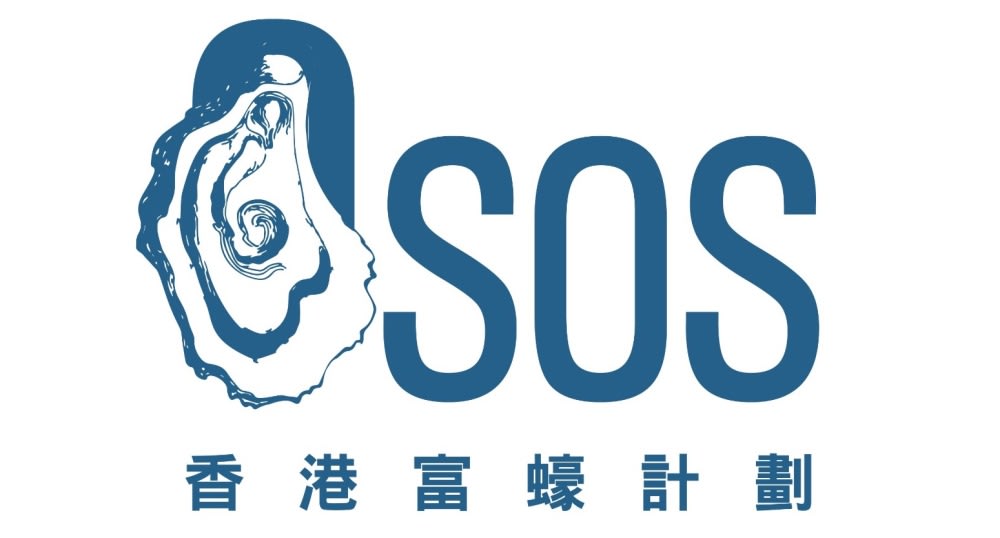
Oysters Save Our Seas (Oyster SOS) is a new ecological restoration project that was started by a group of academics, schools, oyster farmers, religious groups and NGOs who were inspired by the Billion Oyster Project in New York. Spearheaded by Professor Kenneth Leung at the State Key Laboratory of Marine Pollution (City University of Hong Kong), they are currently running important projects in Hong Kong, with the ultimate goal of placing enough oysters in the 852 to naturally clean our oceans through biofiltration.
“It takes at least two billion oysters to clean the water in Tolo Harbour daily, but even just one million oysters can make a difference. To achieve this, we need more data on the survival rates, species and number of marine organisms recruited in the oyster reefs. Data from the pilot sites in the first year will help us to improve the design and plan for larger- scale oyster restorations in two to three years’ time.”
–Ms Grace Chau, Project Manager, Oysters Save Our Seas
Oyster SOS has partnered with researchers at local universities, the Hong Kong Oyster Cultural and Ecological Association, The Nature Conservancy, the Deep Bay Oyster Cultivation Association and the Royal Hong Kong Yacht Club, as well as local oyster farmers in operation in Lau Fau Shan, and is a nature-based project to specifically tackle the problems leading to red tides in Hong Kong.
Red tides in Hong Kong
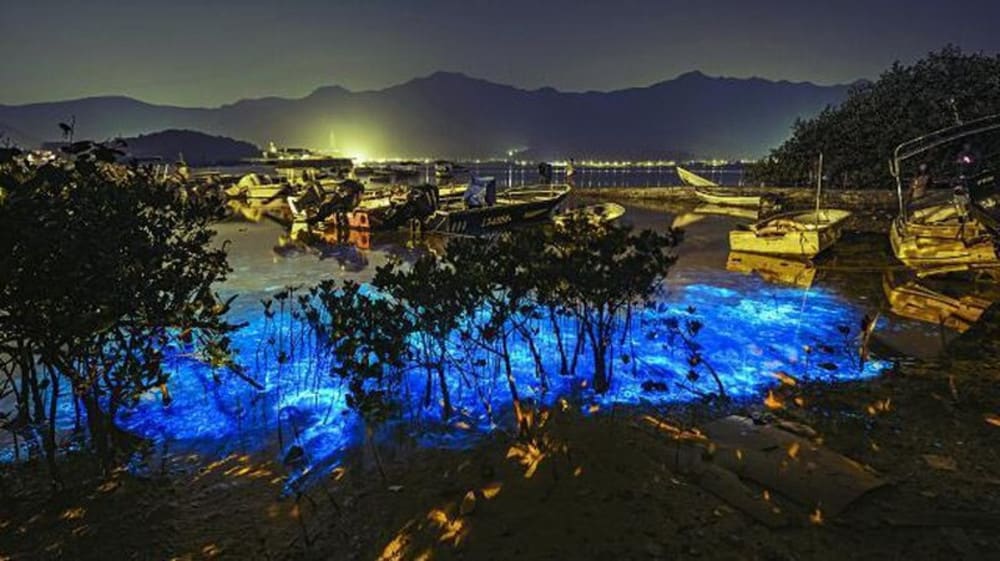
Noctiluca scintillans (above) is a beautiful bioluminescent version of red tide that occurs when harmful algae bloom – in other words, their growth gets out of control. Red tide is a common occurrence that can kill marine life either through toxins or depletion of oxygen, and Tolo Harbour is a semi-enclosed bay with poor flushing capacity that is very suitable for the excessive growth of harmful algae. It sees the formation of red tides every year.
Oysters can help by literally consuming the algae that cause red tides. They use their gills to filter the phytoplankton (algae) and particulates from the water.
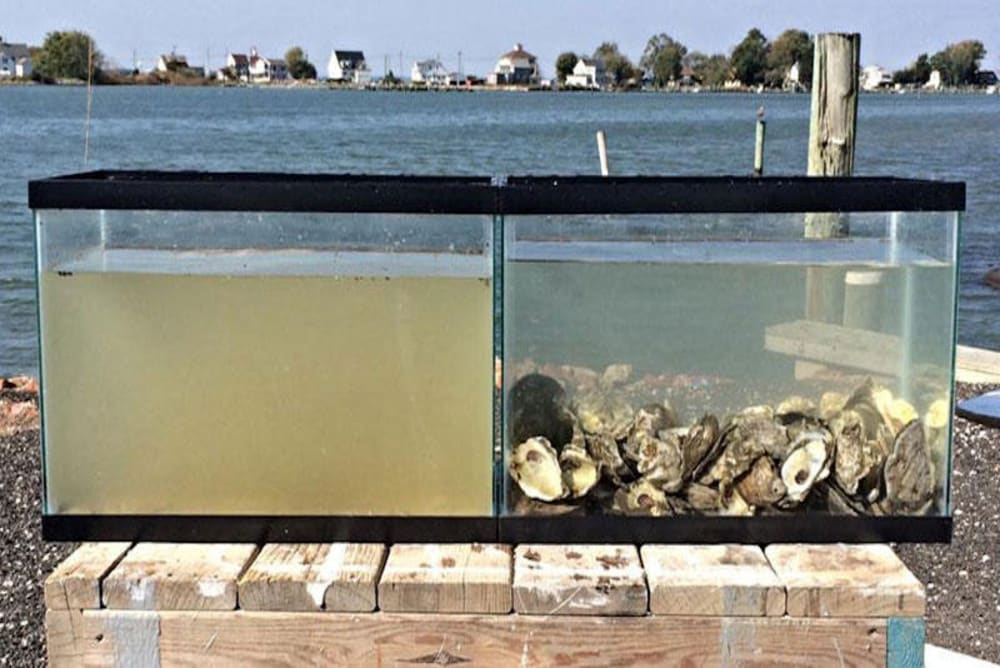
This filtering process also reduces high turbidity; cloudy, opaque water or water thick with suspended matter becomes more clear. This allows sunlight to reach deeper into the water, encouraging the growth of seagrasses and supporting various other marine life.
Functions provided by intact oyster reef habitatssource: Restoration Guidelines for Shellfish Reefs. The Nature Conservancy
However, oysters may become sealed shut owing to accumulated biofouling (build-up) on their shells. Temperatures that are too warm or too cold discourage new oyster spawning, and reduced water oxygen levels hinder oyster growth. Oysters are dependent on being in a suitable range of salinity too. The very algae blooms they have been grown to combat may affect any number of crucial factors, enough to kill them.
For these reasons, Oyster SOS will be carefully monitoring its pilot sites on Kellett Island, Middle Island and Shelter Cove next year before running them full steam across the territory.
Oyster SOS’s projects
- Preparing pilot sites where both oyster shells and live oysters will be separately placed to test their effectiveness in attracting wild oyster larvae (oyster babies) and other marine organisms
- Working with teachers in Hong Kong to develop curriculum and school activities to share knowledge and encourage engagement from the community
You can get in touch by email regarding volunteering and educational opportunities with the Oyster SOS project.
Hong Kong oysters tomorrow
What happens if we get a million or even a billion Hong Kong oysters? Can we eat them?
Bivalves are one of the most sustainable sources of meat known, requiring very little additional food to farm them and actively cleaning the environment in the process.
However, oysters can ingest harmful algae without visible signs of harm to themselves and these toxins can accumulate. Harmful algal blooms (HABs) are caused by many different species of algae. These HABs sometimes manifest themselves as red tides, but if there is no red tide, this does not guarantee that the water is free from harmful algae.
We know Tolo Harbour is particularly susceptible to these HABs, and when we eat oysters that have accumulated a significant amount of toxins from harmful algae such as Karenia mikimotoi, we are at risk from illnesses such as neurotoxic shellfish poisoning and paralytic shellfish poisoning. Fortunately, most algal blooms in Hong Kong are with non-toxic algal species, and only once in a few years do we encounter toxic algae like Karenia mikimotoi.
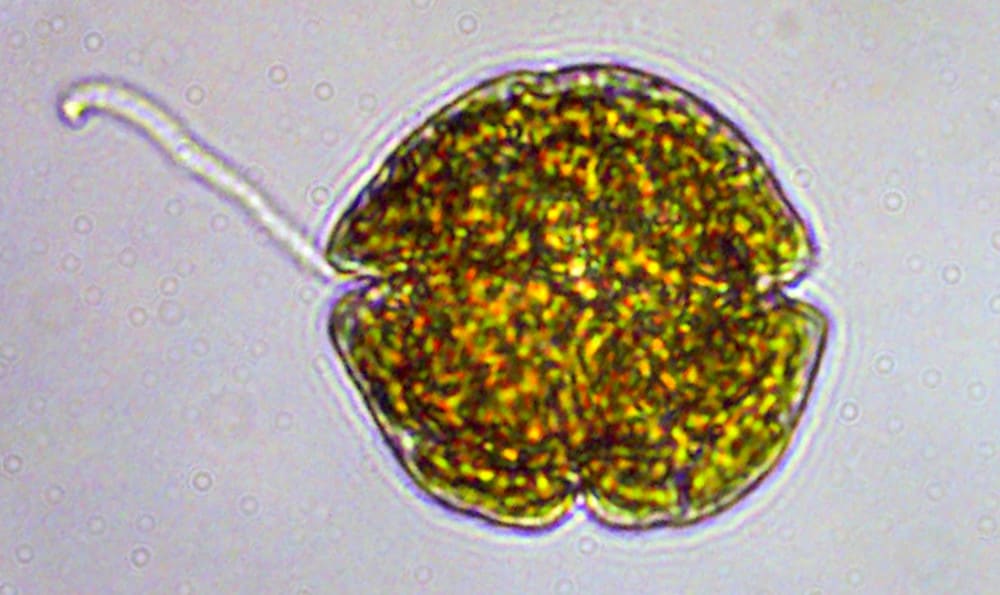
Even though nitrogen levels have been reducing since the Tolo Harbour Action Plan was initiated in 1988, there can be no Billion Oyster eating challenge from Tolo Harbour until HABs are brought under control.
And the Oyster SOS project has a different focus than merely how we can eat more and more delicious oysters.
“The benefits of oyster reefs as a functioning ecosystem, rather than a resource for exploitation, will first need to be demonstrated to local communities by effective restoration and education.”
– Research article “Restoration potential of Asian oysters on heavily developed coastlines”
In order for the project to even properly begin, we must allow the reefs to thrive, protected from destructive behaviour and exploitation.
Hong Kong is a bustling city with significantly developed shorelines and diverse marine life. Imagine showcasing pristine waters, successfully restored reefs and the very best research whilst building a holistic understanding of the societal and environmental effects of oysters in the harbours of our coastal cities.
Then maybe… maybe there will be some for us to eat too.
For more articles like this, like Foodie on Facebook

